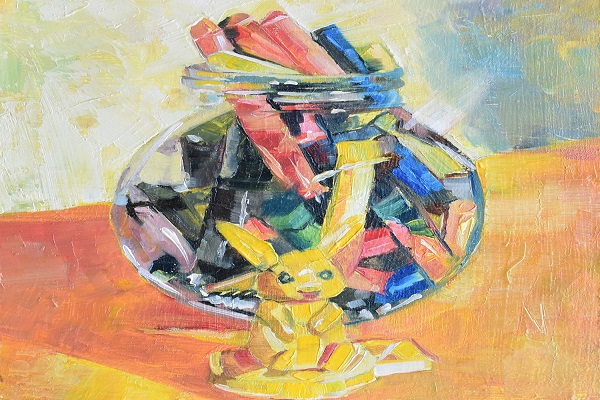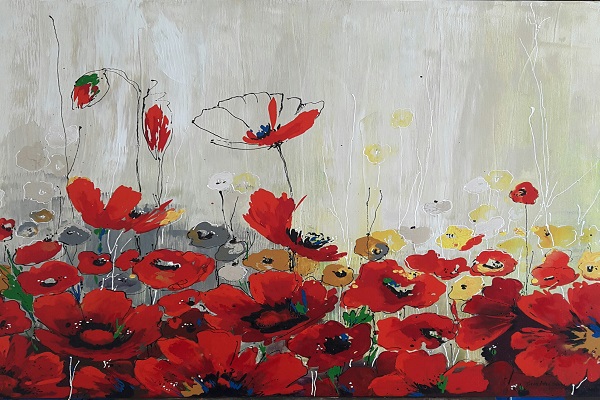
Still life composition is a fundamental aspect of visual art that encompasses the arrangement and organization of objects within a confined space to create captivating and purposeful artwork. This genre of art typically features inanimate objects like fruits, flowers, everyday items, or even symbolic elements meticulously arranged on a surface. While seemingly static, still life compositions carry profound significance in the art world, as they offer artists a unique canvas to explore various artistic principles.
Composition in still life painting serves as the backbone of the artwork, dictating how the elements within the frame interact with one another. It involves the careful selection of objects, their placement, and the consideration of lighting, perspective, and color harmonies. Through thoughtful composition, artists can guide the viewer's eye, create visual balance, and convey emotions or narratives.
The significance of composition in still life paintings lies in its power to evoke emotions, tell stories, and convey meaning. A well-composed still life can transcend the ordinary, transforming everyday objects into extraordinary visual experiences. Artists can use composition to establish focal points, emphasize certain elements, or create a sense of harmony or tension. Whether it's the delicate balance of a bouquet of flowers, the juxtaposition of contrasting textures, or the interplay of light and shadow, composition allows artists to imbue their work with depth and intrigue.
Moreover, still life compositions invite viewers to contemplate the beauty and symbolism of the objects portrayed. They can serve as a reflection of the artist's perspective on life, mortality, or the passage of time. Each element chosen for the composition can carry cultural, historical, or personal significance, adding layers of interpretation and symbolism to the artwork.
Principles of Still Life Composition
Still life composition relies on several fundamental principles that work in harmony to create visually engaging and meaningful artworks. These principles guide the arrangement of objects and the way they interact within the frame:
-
Balance: Balance in still life composition ensures that the visual weight of objects is distributed harmoniously. Artists aim to achieve either symmetrical balance, where elements on both sides of the composition are evenly weighted, or asymmetrical balance, where different elements balance each other despite their varying sizes or positions. Balance instills a sense of stability and equilibrium, preventing the composition from feeling cluttered or disjointed.
-
Focal Points: Focal points are the areas of the composition that draw the viewer's attention. In still life, artists strategically position one or more objects or areas to serve as focal points. These elements often hold special significance or possess visual prominence due to their size, color, or contrast. Focal points provide a sense of hierarchy, guiding the viewer's gaze and conveying the artist's intended message or narrative.
-
Rule of Thirds: The rule of thirds divides the composition into a grid of nine equal parts using two horizontal and two vertical lines. Placing key elements along these lines or at their intersections helps create a visually pleasing and balanced composition. This rule encourages artists to avoid placing objects dead center, making the artwork more dynamic and engaging.
-
Negative Space: Negative space refers to the empty areas surrounding the objects in the composition. Paying attention to negative space is crucial in still life, as it defines the shapes and forms of objects, allowing them to stand out more prominently. Skillful use of negative space can enhance the overall composition, providing breathing room and emphasizing the subject matter.
-
Lighting: Lighting is a critical element in still life composition. Artists manipulate light sources to create shadows, highlights, and reflections that add depth, dimension, and mood to the composition. The direction, intensity, and quality of light significantly impact the visual impact of the artwork. Careful lighting enhances the textures and surfaces of objects, making them more tactile and engaging.
Arranging and Composing Your Still Life
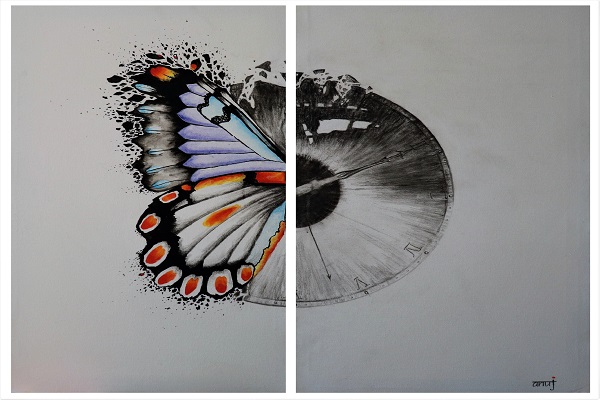
Creating a compelling still life composition requires careful consideration and experimentation. Here are practical tips and techniques to help you arrange and compose your still life:
-
Select Meaningful Objects: Choose objects that hold personal significance or convey a story or theme. Meaningful objects can imbue your composition with depth and emotion. For instance, if you're exploring the theme of time, you might include a vintage pocket watch, an hourglass, and a fading flower.
-
Create a Focal Point: Designate a central point of interest in your composition. This could be an object with unique visual qualities, such as vibrant color, interesting texture, or striking contrast. Placing this focal point off-center, following the rule of thirds, can make your composition more dynamic. For example, if you're painting a fruit still life, a ripe, colorful fruit like a red apple can serve as your focal point.
-
Experiment with Arrangements: Don't settle for your first arrangement. Try various setups by moving objects around. Consider the relationships between objects, the negative space, and how they interact with one another. Take photographs of different arrangements to assess which one works best. For example, in a floral still life, experiment with the positioning and angles of the flowers and vases.
-
Consider Lighting: Lighting is crucial in still life. Experiment with different lighting angles and intensities to create shadows and highlights that enhance the composition. Play with natural light from a window or artificial lighting to achieve the desired mood. In a vase of flowers, lighting from the side can create interesting shadows and bring out the texture of petals.
-
Use a Variety of Shapes and Sizes: Incorporate objects of different shapes, sizes, and heights to add visual interest and balance to your composition. For instance, if you're painting a table setting, combine tall wine glasses, a round plate, and smaller utensils to create a pleasing contrast in shapes.
-
Consider Color Harmony: Pay attention to the colors of your objects. Aim for a pleasing color harmony by selecting objects with complementary or analogous colors. This can create a visually cohesive and appealing composition. For example, in a still life featuring different vegetables, choose vegetables with colors that complement each other, like red tomatoes and green peppers.
-
Edit and Simplify: Don't overcrowd your composition with too many objects. Less can often be more in still life. Remove any elements that distract from the main theme or focal point. Simplicity can lead to a more impactful composition.
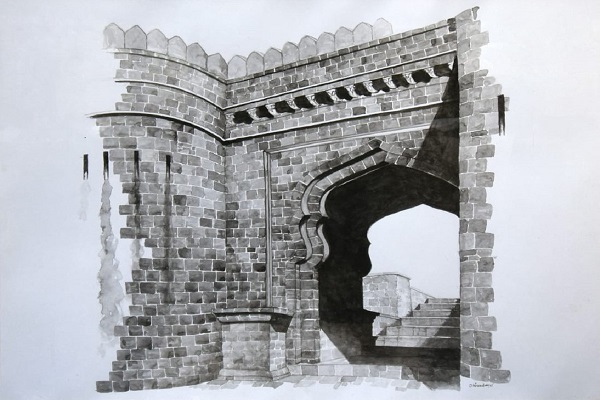
Interesting Blog: Exploring the Timeless Beauty of Still Life Paintings
Exploring Composition Styles in Still Life Painting
Still life painting, a genre known for its versatility, has evolved over the centuries, showcasing various composition styles and approaches. Here are some prominent styles:
-
Classic Symmetry: Classic still life compositions often feature perfect symmetry, with objects carefully arranged in a balanced, harmonious manner. An iconic example is "The Ambassadors" by Hans Holbein the Younger. This 16th-century masterpiece displays meticulously arranged objects, including musical instruments, books, and a skull, in a symmetrical fashion, conveying themes of mortality and knowledge.
-
Asymmetry and Dynamic Arrangements: Modern still life compositions often break away from symmetry, embracing asymmetry and dynamic arrangements. Juan Gris' "Still Life with Checked Tablecloth" is an excellent example. The cubist approach features fragmented objects, such as bottles, fruits, and a newspaper, arranged dynamically to create multiple viewpoints simultaneously.
-
Minimalism: Minimalist still life compositions focus on simplicity and the reduction of elements to their essential forms. Giorgio Morandi's work, like "Still Life," epitomizes this style. Morandi's paintings often feature a limited color palette and a small selection of objects, emphasizing the beauty in the mundane and inviting contemplation.
-
Surrealism: Surrealist still life compositions defy reality by merging everyday objects with dreamlike or fantastical elements. Salvador Dali's "Persistence of Memory" is a prime example. This iconic painting features melting clocks draped over various objects in a barren landscape, creating a surreal and thought-provoking atmosphere.
These different styles demonstrate the versatility and adaptability of still life painting as a genre. Whether adhering to classic symmetry, embracing asymmetry and dynamism, pursuing minimalism, or delving into the surreal, still life artists have the freedom to express their creativity and convey unique messages. These styles have left a lasting impact on the art world, inspiring generations of artists to experiment with still life composition and push the boundaries of the genre.
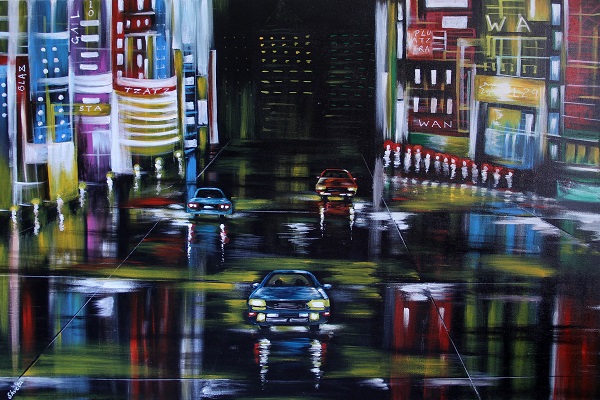
Read More: 6 Contemporary Artists Redefining Still Life Paintings
Conclusion
In the ever-evolving world of art, still life painting continues to captivate audiences through its diverse composition styles and timeless appeal. From classic symmetrical arrangements to dynamic and surreal compositions, the genre has showcased a rich tapestry of artistic expressions.
While classic symmetry, as exemplified by Hans Holbein's "The Ambassadors," remains a powerful testament to the genre's historical significance, modern paintings have ushered in a new era of experimentation. Artists like Juan Gris, with his dynamic and asymmetrical approach in "Still Life with Checked Tablecloth," have shattered conventional norms, inviting viewers to explore multiple dimensions of the same subject.
In embracing minimalism, Giorgio Morandi's serene "Still Life" paintings demonstrate that simplicity can evoke profound emotions and reflections. His work serves as a bridge between traditional and contemporary still life, revealing the enduring beauty of everyday objects through a minimalist lens.
The surrealist movement, epitomized by Salvador Dali's "Persistence of Memory," invites us into a world where reality intertwines with the fantastic. Surrealism challenges the boundaries of imagination and provokes thought, reminding us of the genre's capacity to intrigue and mystify.
In the contemporary art landscape, modern paintings of still life continue to evolve, transcending traditional boundaries and cultural contexts. Artists from around the world, including India, are contributing to the genre's growth and redefining its parameters. If you're passionate about exploring contemporary still life art, consider exploring the vast collection of modern paintings at IndianArtIdeas. This platform offers a curated selection of artworks that showcase the diversity and innovation within the genre. With its dedication to promoting both established and emerging artists, IndianArtIdeas is a valuable resource for art enthusiasts and collectors seeking to engage with the ever-evolving world of still life painting. Explore, experience, and appreciate the beauty and creativity of modern still life paintings through IndianArtIdeas, where art comes to life in vibrant and captivating ways.





















